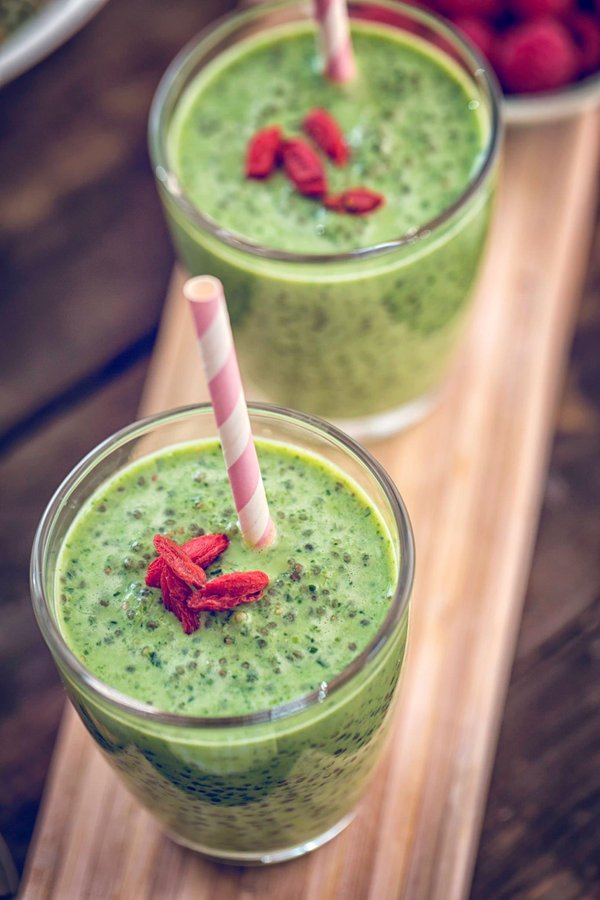
Superfoods are a buzzword in the health and wellness world, often described as nutritional powerhouses. These nutrient-dense foods are thought to offer numerous health benefits due to their high concentration of vitamins, minerals, antioxidants, and other beneficial compounds. Incorporating a variety of superfoods into your daily meals could be a positive step towards supporting overall well-being and potentially reducing the risk of certain health issues.
What Makes a Food a "Superfood"?
While there's no official scientific definition for the term "superfood," it's generally used to describe foods that are particularly rich in nutrients and bioactive compounds that are considered beneficial for health. These aren't miracle cures, but rather foods that pack a powerful nutritional punch per calorie. Think about foods that are exceptionally high in antioxidants, fiber, healthy fats, vitamins, or minerals. They are often plant-based, though some fish and dairy products might also fall into this category depending on their nutrient profile.
The key is the density of beneficial compounds. For instance, berries might be high in antioxidants, leafy greens rich in vitamins and minerals, and fatty fish packed with Omega-3 fatty acids. The concept encourages focusing on foods that offer significant health advantages when included as part of a balanced diet. It's less about consuming one single item and more about incorporating a diverse range of these nutrient-rich options to maximize dietary benefits.
Common Examples of Superfoods and Their Benefits
Let's explore some popular examples of foods often labeled as superfoods and the potential health benefits they are associated with:
Berries
Blueberries, strawberries, raspberries, and acai berries are often cited as superfoods. They are loaded with antioxidants, particularly anthocyanins, which give them their vibrant colors. Antioxidants help combat oxidative stress in the body, which is linked to chronic diseases. Berries are also good sources of fiber, Vitamin C, and Vitamin K. Their high fiber content can support digestive health and help with satiety, while Vitamin C is crucial for immune function and skin health.
Leafy Greens
Spinach, kale, collard greens, and Swiss chard are incredibly nutrient-dense. They are excellent sources of vitamins A, C, E, and K, as well as folate, iron, calcium, and fiber. Vitamin K is important for blood clotting and bone health. Lutein and zeaxanthin, found in leafy greens, are beneficial for eye health. Including a variety of leafy greens can contribute significantly to meeting your daily vitamin and mineral requirements.
Fatty Fish
Salmon, mackerel, sardines, and herring are rich in Omega-3 fatty acids, particularly EPA and DHA. These healthy fats are known for their potential benefits for heart health, brain function, and reducing inflammation. Fatty fish also provide high-quality protein, Vitamin D, and selenium. Regular consumption of fatty fish, as part of a balanced diet, is often recommended by health organizations.
Nuts and Seeds
Almonds, walnuts, chia seeds, flaxseeds, and pumpkin seeds are packed with healthy fats, protein, fiber, vitamins, and minerals like magnesium, zinc, and selenium. Walnuts, for example, are notable for their alpha-linolenic acid (ALA), another type of Omega-3 fatty acid. Chia and flaxseeds are also excellent sources of fiber and ALA. Nuts and seeds can be a great addition to salads, yogurt, or consumed as a snack, contributing to satiety and nutrient intake.
Legumes
Beans, lentils, chickpeas, and peas are affordable and nutrient-dense foods. They are high in plant-based protein, fiber, folate, iron, and potassium. The fiber content can help regulate blood sugar levels and support digestive health. Legumes are a staple in many healthy eating patterns around the world and can be incorporated into various dishes like soups, stews, and salads.
Other Noteworthy Superfoods
Avocados are rich in monounsaturated fats, fiber, potassium, and vitamins K, C, B6, and E. Green tea is known for its high concentration of antioxidants called catechins. Garlic has been traditionally used for its potential health properties and contains sulfur compounds. Turmeric contains curcumin, a compound with antioxidant properties. Including a mix of these and other nutrient-rich foods ensures a wide spectrum of beneficial compounds in your diet.
Incorporating Superfoods into Your Diet
Adding superfoods to your meals doesn't have to be complicated. Start small and gradually incorporate them. Add berries to your breakfast cereal or yogurt. Blend leafy greens into smoothies. Include nuts and seeds in salads or snacks. Use legumes in soups, stews, or as a side dish. Choose fatty fish a couple of times a week. The key is consistency and variety. Focus on making simple, sustainable changes to your eating habits. Don't rely on one or two superfoods; aim for a diverse intake of nutrient-dense options.
Remember that superfoods are best consumed as part of a balanced diet that includes a variety of fruits, vegetables, lean proteins, and whole grains. They are not intended to replace other healthy foods or to compensate for an otherwise poor diet. Consulting with a healthcare professional or registered dietitian can provide personalized guidance on incorporating nutrient-dense foods that align with your individual health needs and goals. Focusing on nutrient density can be a rewarding approach to enhancing your dietary intake and supporting your overall well-being over the long term.
Embracing the concept of superfoods is about prioritizing nutrient density in your daily eating patterns. By focusing on incorporating a wide range of these powerful foods, you can enhance your intake of essential vitamins, minerals, antioxidants, and fiber, contributing to a more vibrant and healthier lifestyle. Making conscious choices about the foods you eat is a fundamental step towards nurturing your body and promoting long-term health and vitality.

